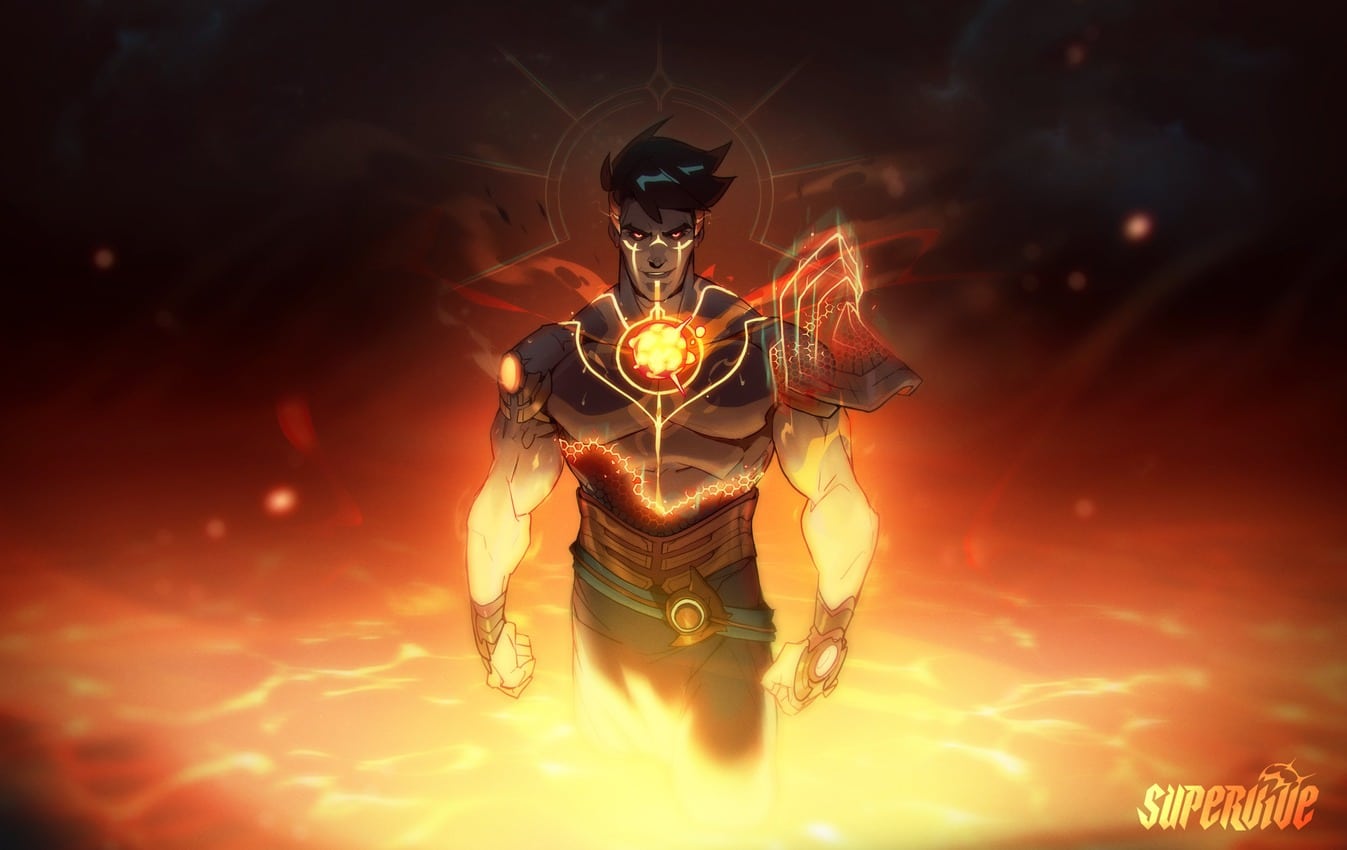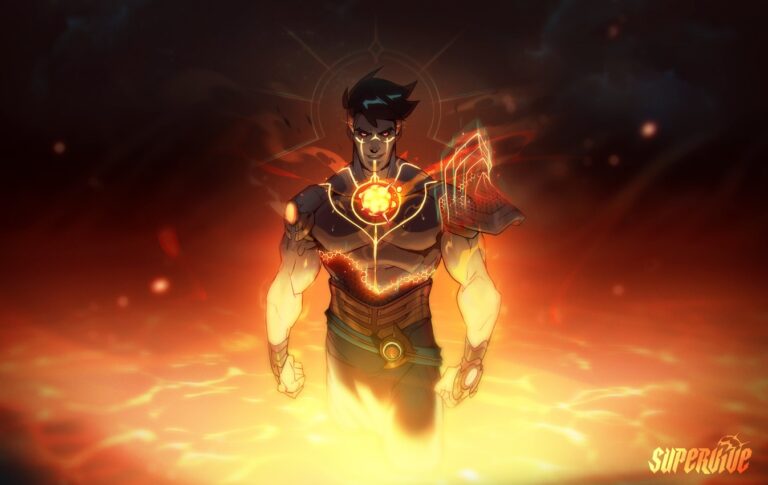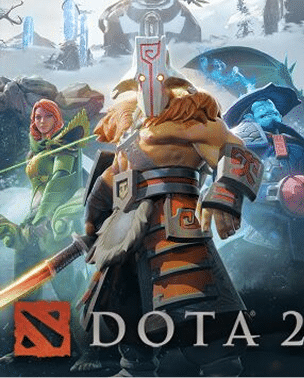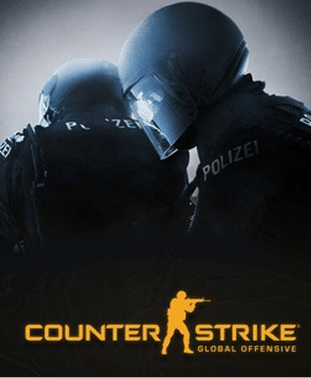Counter-Strike skins crash has exposed the unspoken truth of the skins economy
Darragh Harbinson, Senior Editor
Last Updated: 03/11/2025
They say that those with no appreciation for history are doomed to repeat it.
The truth of that idiom has never been more evident than in the fallout from the recent Counter-Strike 2 update, which crashed the CS2 skins economy.
$2 bn was wiped off the Counter-Strike skins market cap in a single night, with the market falling by another $500m since yesterday.
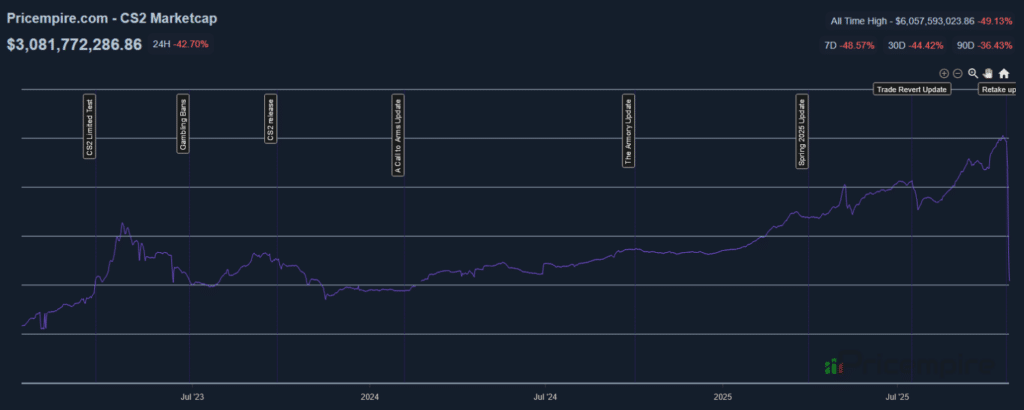
As with every real-world market crash, investors are searching for lessons to take away from their losses.
In truth, the reasons why Counter-Strike skins were a risky investment have always been obvious, but those hoping to make money in Counter-Strike’s skins markets have, at times, been willfully ignorant of the reality of digital goods.
Worst of all, that reality has been exposed before.
What does the Steam Subscriber Agreement (SSA) reveal about Counter-Strike skins?
Disclaimer: The author is not a legal expert, and the following is not legal advice.
For most Steam users, the Steam Subscriber Agreement is just a tickbox that you have to agree to before you can buy the thing you want.
However, if you take the time to read through the Steam Subscriber Agreement, you will realise the two fundamental truths that undermine the skins economy: You own nothing, and Valve can do what they want.
To understand this, first we must understand the terminology used in the terms of service:
- ‘Content and Services‘ describes any product you can buy or sell on Steam. That includes games, DLC, and inventory items.
- ‘Subscription(s)’ in this context means the right to use and access ‘Content and Services.’
With that in mind, we can access the following passages of Steam’s SSA:
Section 2.A states, “The Content and Services are licensed, not sold. Your license confers no title or ownership in the Content and Services.”
The passage is regularly quoted by Games Rights advocates, as it means that games in your Steam library are not technically yours. This also refers to the items within those games, including Counter-Strike skins.
This is reiterated in Section 2.F, which states, “All title, ownership rights and intellectual property rights in and to the Content and Services and any and all copies thereof, are owned by Valve and/or its or its affiliates’ licensors.”
Section 3.D states, “You understand and acknowledge that Valve does not have any obligation to provide or maintain any Subscription Marketplace. Valve may decide to cease operation of any Subscription Marketplace, change the fees that it charges or change the terms or features of the Steam Subscription Marketplace.”
It later continues, “You also understand and acknowledge that Subscriptions acquired in any Subscription Marketplace are license rights, that you have no ownership interest in such Subscriptions, and that Valve does not recognize any transfers of Subscriptions (including transfers by operation of law) that are made outside of Steam.”
“You acknowledge and agree that your ability to acquire, trade, sell or purchase Subscriptions (including license rights to virtual items) may be conditionally limited, restricted or terminated at any time.”
When reviewing these clauses, we see that Valve technically owns every digital item you have. Additionally, it has no obligation to third-party marketplaces or even to maintain its own market.

CSGO Lotto scandal precedent shows us the reality of Counter-Strike cosmetics
Upon reviewing those sections, we can see the risk inherent in Counter-Strike skins.
The reality is that you do not really own your items. Everything inventory item on Steam is a service which Valve provides, from your games to the skins inventory within them.
The whole system is in the discretion of Valve entirely, a fact which is evidenced by VAC bans, something which occurs every single day, rendering that account’s skins untradable.
The only moment skins are truly worth real money is when you withdraw that money by selling on third-party sites. Yet, someday in the future, Valve could ban third-party websites from trading skins.
They have, in fact, done something very similar in the past.
In July 2016, Valve sent cease and desist letters to several CSGO betting sites. These sites operated by allowing players to wager their skins as collateral for gambling purposes.
The move followed the CSGO Lotto controversy, which saw YouTubers Tom “Syndicate” Cassell and Trevor “Tmartn” Martin promote their own skins gambling site in an undisclosed fashion.
The most notable of these casualties was the hugely popular CSGO Lounge. Valve’s action effectively killed that sector of the skins economy, with sites either pivoting their focus or shutting down entirely.
At the time, the crackdown was aimed at gambling specifically, but we are potentially only one news story away from a similar move to trading or case-opening sites.
The assumption that underwrote the skins economy
With that in mind, why was the CS2 skins economy so bullish when its real-money aspect could be wiped out at any moment?
One common talking point in the last few days is that Valve broke the trust of skins collectors, but when listening to the reasoning behind that argument, you quickly realise that said trust rested on a load-bearing assumption.
The entire concept that Valve would not make a move to damage the value of skins rested on the assumption that Valve would not interfere, as it financially benefits from more valuable skins.
That benefit comes from the Steam transaction fee, which is a percentage-based fee. As such, the larger the original transaction, the larger the fee Valve collects for every Steam Market sale.
That assumption built the skins economy to its current scale, but that assumption has been proven false beyond all doubt after the addition of knives and gloves Trade Ups.
Valve would have been perfectly aware of the damage the update would do to the market cap, but it did so anyway.
Yet, that damage is not entirely just a deflating of valuable items, which will now be more common. The deflation also comes from that broken assumption as so much of the skins market relies on its logic.
As real money markets allow players to cash out, opening up the ability for players to use the skins as investments.
As such, the safety of third-party sites were also protected by that assumption that has been disproved.
To quote another apposite aphorism, “You can’t put the genie back in the bottle.”
For the skins economy, that means that Valve has made their overarching ability to destroy the skins economy evident in this latest update.
The move has exposed that there is no guaranteed stability or ability to assume Valve will act in the market’s interest.
Currently, we are seeing thousands of individuals come to the conclusion that the removal of that fundamental assumption means that treating Counter-Strike skins as an investment is dead.
Historically, however, we have seen that Counter-Strike players have willfully pretended that the genie is back in the bottle.
When this storm passes, will Counter-Strike’s skins community learn from its experience or simply let history be repeated again?
Darragh Harbinson, Senior Editor
Darragh Harbinson is an esports writer specialising in Counter-Strike. He has written for Esports News UK, Esports Insider, UKCSGO, Dexerto, and Rush B Media.
Stay Updated with the Latest News
Get the most important stories delivered straight to your Google News feed — timely and reliable





From breaking news and in-depth match analysis to exclusive interviews and behind-the-scenes content, we bring you the stories that shape the esports scene.
Monthly Visitors
User Satisfaction
Years experience
Latest Counter-Strike 2


